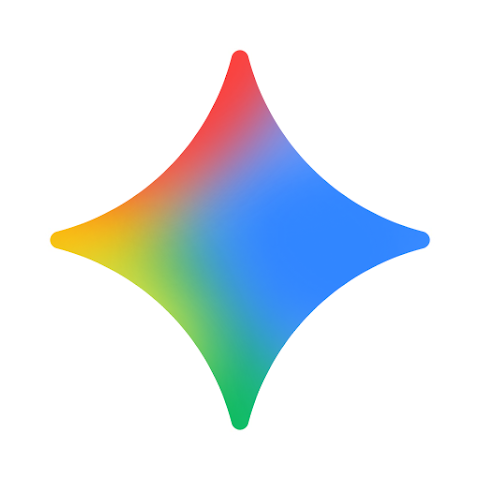Artreviewgenerator

Generate and analyze art language.
art review language analysis linguistics natural language processing text generation culture discourseTool Information
| Primary Task | Art reviews |
|---|---|
| Category | media-and-content-creation |
| Sub Categories | generative-text creative-writing natural-language-processing |
| Pricing | Free |
| Website Status | 🟢 Active |
The Art Review Generator is a tool specializing in the generation and analysis of language used in the discourse of fine art and culture. Rooted in natural language processing and text generation methodologies, this tool takes user-provided prompts and generates a series of sentences. Its training data is drawn from approximately 57 years of art reviews in Artforum. While the tool does not comprise of true artificial intelligence, it utilizes linguistic relationships and patterns seen in extensive examples to form new texts. Major reasons for selecting art reviews as training data include the unique, human-specific language and potential complexities of academic and esoteric jargon. Generated reviews may present the interpreter with language demonstrating intent, emotion, technique, and impact. The tool also provides insights into any biases, prejudices, or judgements intrinsic to the original text. Also, due to the multi-decade span of the source material, the generated reviews may fuse perspectives from different time periods in unexpected ways. The mistakes and successes in the generated text can both provide informative value in the larger constructs of language.
| Pros |
|---|
|
| Cons |
|---|
|
Frequently Asked Questions
1. What is the Art Review Generator?
Art Review Generator is a natural language processing tool and text generator that specializes in the generation and analysis of language used in the discourse of fine art and culture. It creates sentences based on user-provided prompts, simulating the language seen in art reviews.
2. How does Art Review Generator work?
Art Review Generator operates by taking a set of words as a prompt and generating a medium-length set of sentences that approximate the training data. Driven by a deep matrix of probabilities, it bases its output on the patterns seen in billions of text examples.
3. What is the source of training data for the Art Review Generator?
Art Review Generator's training data originates from around 57 years of art reviews published in Artforum.
4. Why does Art Review Generator use art reviews for training data?
Art reviews are employed as training data due to their human-specific language and the unique complexities of academic and esoteric jargon they present. This kind of language is distinctive and challenging for traditional linguistic models, allowing for a wide range of unique language generation.
5. Does Art Review Generator understand the prompts or training data?
No, the Art Review Generator does not understand the prompts or the training data. It only recognizes patterns and linguistic relationships between words within its billion examples to generate new text.
6. What kind of outputs can I expect from the Art Review Generator?
You can expect medium-length sentences that approximate the language used in art reviews. These simulations may showcase intent, emotion, technique, impact, and even academic or esoteric jargon. The generated reviews could combine perspectives from different decades in novel ways.
7. Can Art Review Generator detect bias or prejudice in the texts?
Yes, Art Review Generator can reveal any biases, prejudices, or judgments inherently present in the source material. These socio-linguistic elements become visible through the language used in the generated reviews.
8. Why isn't Art Review Generator considered a true AI?
Art Review Generator is not considered a true AI because it doesn't comprehend the meaning behind the prompts or the training data. Instead, it employs statistical probabilities based on extensive text examples to create new sentences.
9. Can Art Review Generator handle academic or esoteric jargon?
Yes, the Art Review Generator can handle academic and esoteric jargon. Art reviews often delve into academic and complex language, and this tool is designed to simulate these language challenges.
10. How is the ability of the Art Review Generator to generate sentences of medium length?
Art Review Generator's ability to generate medium-length sentences is robust. It benefits from a comprehensive database of varied sentence structures sourced from an extensive set of art reviews spanning multiple decades.
11. Why might the generated reviews combine perspectives from different decades?
Reviews may combine perspectives from different decades due to the diverse time range included in the training data. As Art Review Generator draws from around 57 years of art reviews, it blends these varied perspectives in its generated texts, resulting in potentially novel combinations.
12. What are some of the limitations or challenges of the Art Review Generator?
One of the limitations of Art Review Generator is its lack of understanding of the meaning behind prompts or training data. Additionally, while it can generate medium-length sentences, it may sometimes produce sentences that veer into heavy academic and esoteric jargon, which could be confusing for users not familiar with such language.
13. Can Art Review Generator simulate the structure of a thesis and its supporting statements?
Yes, the Art Review Generator has begun generating larger constructs of language that can simulate a thesis and its supporting statements, contributing to the comprehensive nature of the generated reviews.
14. Is there a change in the language of art reviews over the years?
Yes, the language of art reviews has evolved significantly across the course of the 57 years from which the training data is sourced, reflecting cultural and linguistic shifts over time.
15. What benefits or insights might I gain from using the Art Review Generator?
Users can gain several benefits from Art Review Generator, including insights into biases, prejudices, and judgments in art discourse, a fusion of perspectives across different decades, and an accessible way to engage with the complex language used in academic and esoteric art criticism.
16. Does the Art Review Generator only generate text based on art reviews?
Yes, Art Review Generator generates text only based on art reviews. The focus on this specific type of content allows for a unique and specialized approach to text generation.
17. Are there any real-world applications or use-cases for the Art Review Generator?
Real-world applications for the Art Review Generator could include use by art historians, critics, students, and enthusiasts for generating art reviews, learning more about the language of art criticism or detecting the evolution in art discourse over time.
18. What's the role of deep matrices of probability in Art Review Generator's operations?
Deep matrices of probability play a crucial role in Art Review Generator's operations. These matrices represent the probability of occurrence of different words together in a sentence, enabling the generator to create new sentences that are plausible and align with the patterns observed in the training data.
19. What would a typical interaction with the Art Review Generator look like?
A typical interaction with the Art Review Generator would involve providing a set of words to the tool as a prompt. The tool then generates a medium-length set of sentences that approximate the linguistic structure and style observed in its training data.
 AI Tool Buzz
AI Tool Buzz
 Google Gemini
Google Gemini Qwen
Qwen Hubspot Breeze
Hubspot Breeze CastFox - AI Podcast Agent
CastFox - AI Podcast Agent Fellou
Fellou Bhagavad-Gita-AI
Bhagavad-Gita-AI Alium
Alium